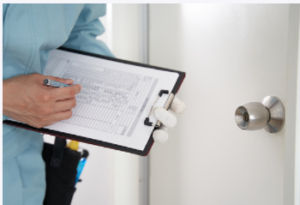An in-depth building inspection after a seismic event is critical to ensure personal safety and address structural damage. It will also help avoid costly repairs in the future.
 An inspector will examine all house components to determine whether they are safe for occupancy. It includes exploring the foundation for cracks and settling. For professional building inspection after earthquake services, check this out!
An inspector will examine all house components to determine whether they are safe for occupancy. It includes exploring the foundation for cracks and settling. For professional building inspection after earthquake services, check this out!
Structural Assessment
A professional engineer conducts a structural assessment. It entails physically walking the facility and looking at the structure for any signs of damage. The engineer will use as-built drawings to determine the most critical issues’ locations and take lots of photos.
FM staff will check the building to ensure it is safe for re-occupancy. The building will be red-tagged if there is a high level of damage or potential danger.
Non-destructive testing (NDT) technology can help identify hidden damage and defects without damaging the structure. It allows engineers to understand the performance of buildings and structures in extreme events, improve design philosophies and seismic retrofits, and reduce vulnerability.
Staircases
Stairs are often the primary means of evacuation during an earthquake. Damaged stairs can delay evacuation, hamper rescue efforts and result in injury or death to occupants and others.
The stairways in the 18-level Forsyth Barr building collapsed during and after the Christchurch earthquake, leaving occupants trapped in the pitch-black. The stairs had relied on a gap, allowing them to slide horizontally end-on with their supporting beams. The hole was stuffed with rubbish, pipes and polystyrene construction packers, according to evidence presented to the royal commission. For professional building inspection after earthquake services, check this out!
Stairway connections should allow sufficient movement to accommodate the relative horizontal earthquake displacements between floors (inter-storey drifts). Sliding “gangplank” connections are preferred to rigid connection details such as bolted joints.
Cabinets and Shelves
Cabinets and shelves often break during an earthquake and can become dangerous projectiles. Store glassware in lower cabinets and hang mirrors and other heavy items securely. Use latches on all cabinets and install non-skid shelf liners in kitchen and bathroom cupboards and closets.
If you are in a tall building, open your cabinets cautiously; objects may fall. Put on long pants, a shirt and work gloves before doing so. Look for spilled medicines, bleaches or gasoline (which could cause a fire) and clean them up immediately.
Consider installing furniture straps on top of wall studs for smaller appliances like printers and microwaves; they hold more weight than the plastic pieces that come with them.
Foundation
The foundation of a building is the most crucial structural concern after an earthquake. Severe earthquakes can cause significant damage to the foundation through shifting, cracks, and settlements.
Earthquake forces put the concrete foundation of a building in compression (pushing on the sides, not pulling up or down). Concrete can withstand tremendous pressure under compression, which is why it’s used in many buildings’ foundations.
A damaged or weakened foundation can lead to sloping floors, doors and windows that won’t open, and interior and exterior cracks. A building expert can inspect the foundation and suggest a variety of upgrades, including a process known as “foundation bolting.” For professional building inspection after earthquake services, check this out!
Major Appliances
A strong earthquake can cause light fixtures to fall, refrigerators to move, and bookshelves to topple. Go on a hazard hunt in your building and look for items that could fall or become projectiles during an earthquake. Secure them to walls or use door latches and braces to keep them in place.
Check a gas stove and water heater for damage or leaks. Consult the appliance owner’s manual for proper care and operation after an earthquake. Make sure sewage lines are intact before flushing toilets. Also, check that fences that confine animals remain intact and can hold livestock.
